Natural Glass Gemstones: Properties, Meanings, Value & More
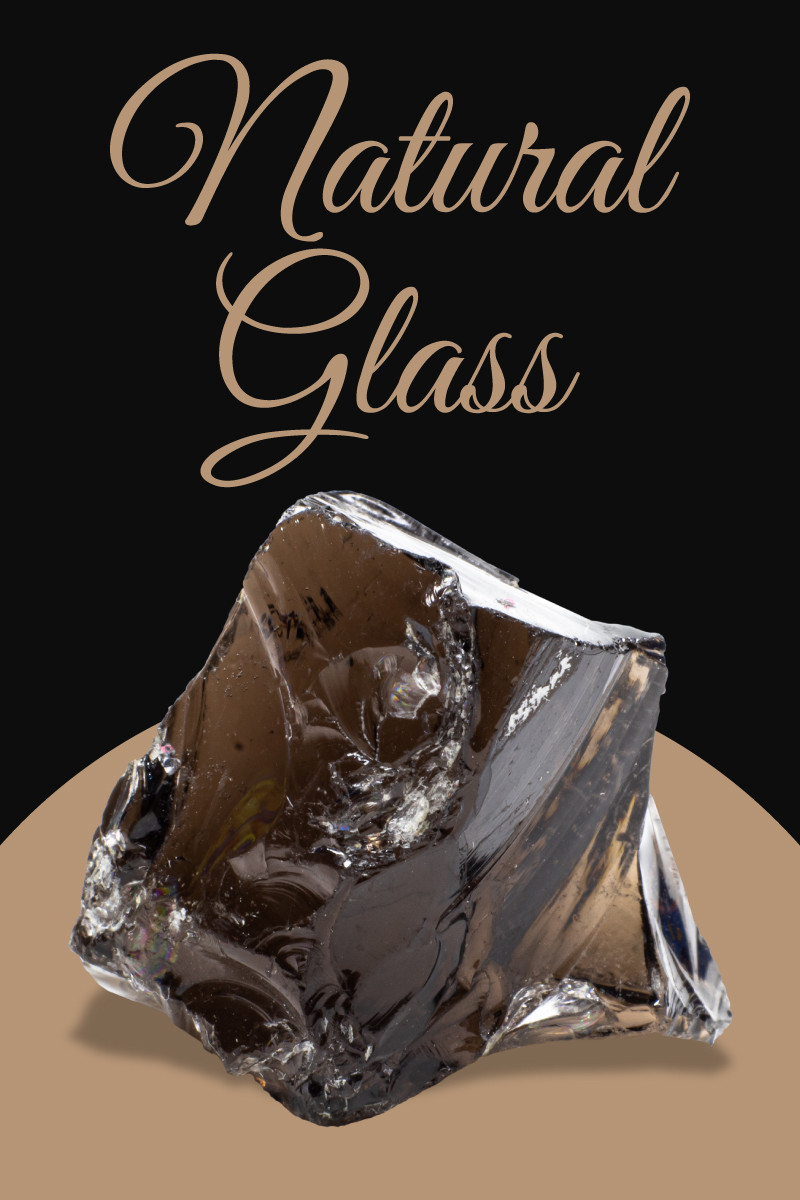 Natural glass gemstones can form on Earth or in space. These types of gems form when materials like rocks or sand become extremely hot and then rapidly cool, so quickly that they don’t crystallize.
Natural glass gemstones can form on Earth or in space. These types of gems form when materials like rocks or sand become extremely hot and then rapidly cool, so quickly that they don’t crystallize.
There’s no understating the importance of glass — you wouldn’t be reading this article without it! But you probably hear “glass” and think “man-made,” right? Think again.
Nature — both on Earth and in outer space — has been forming glass for millennia, and lots of it is both beautiful and educational.
This guide covers the types of natural glass gemstones, their prices, history, benefits, and more!

What is a Natural Glass Stone?
Many forms of natural glass are semi-precious gemstones. But what exactly is glass?
The scientific definition of glass is complex, but it’s considered a state of matter that may be liquid or solid (it’s hotly debated).
In mineralogy, glass is an amorphous (non-crystalline) material with a uniform make-up and random, liquid-like structure.
Natural glass like Libyan desert glass can substitute citrine as a November birthstone, and moldavite is lucky for Sagittarius.
Natural Glass Specifications & Characteristics
Most natural glasses are predominantly silicon. Glass stones are mineraloids, not minerals.
Is natural glass transparent? Not always. Many are translucent to transparent, but others can be opaque or have translucent to opaque edges.
How do you identify glass gemstones? Glass gemstones (natural and man-made) have characteristic round bubbles and swirls, along with concave facets and mold marks if they’re faceted.
But how do you identify natural glass? Many natural glasses have mineral inclusions that synthetic glass lacks.
Plus, many glass gems manufactured as gemstone imitations contain additives that can make their refractive indices and densities higher than natural glass.
So, what makes synthetic glass different from natural glass? Despite near-identical optical and physical properties, natural glass comes from nature and synthetic glass is processed.
Natural glass properties listed:
Mohs hardness: 5-6
Color: Often yellow, blue, or blue-green; Can be virtually any color depending on impurities
Crystal structure: None (amorphous)
Luster: Vitreous
Transparency: Transparent to opaque
Refractive index: 1.46-1.69 (varies by type)
Density: 2.2-3.0 (varies by type)
Cleavage: None
Fracture: Conchoidal
Streak: White
Luminescence: None
Pleochroism: None
Birefringence: None
Dispersion: None
Optical effects: Chatoyancy and iridescence possible for obsidian
Types of Natural Glass Gemstones
We’ll highlight examples of natural glass most often used as gems below.
Obsidian
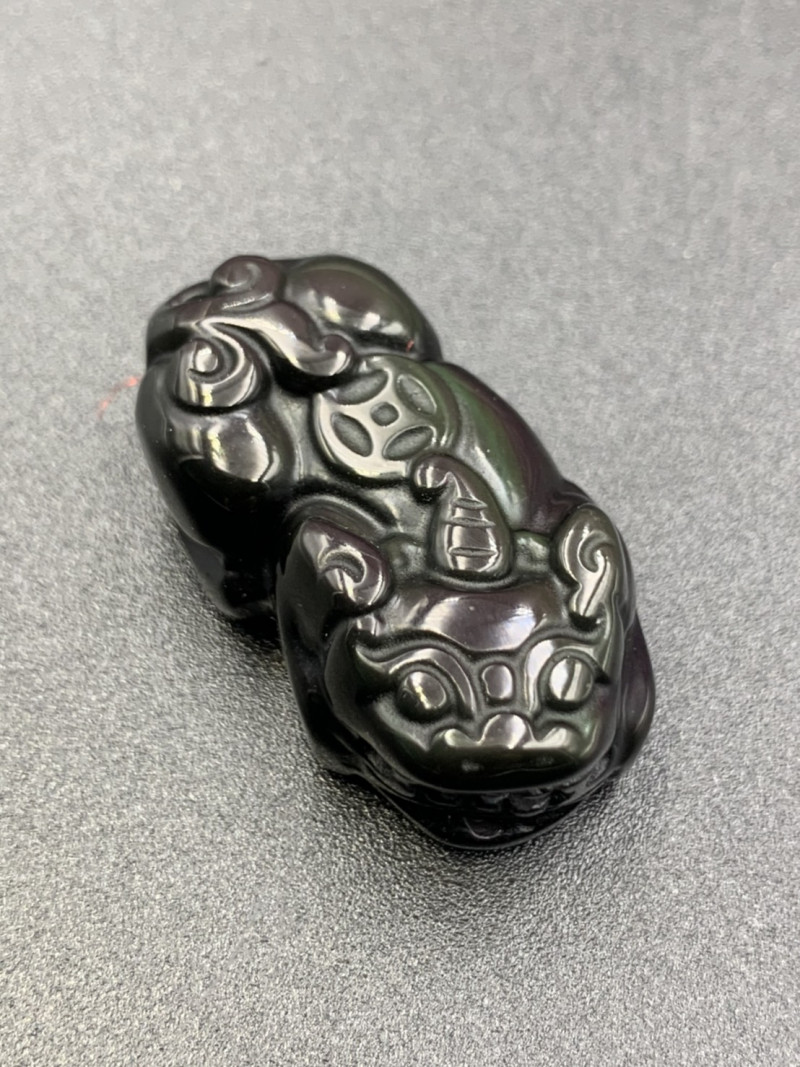 Pictured above: Iridescent "rainbow" obsidian
Pictured above: Iridescent "rainbow" obsidian
Obsidian, often called simply “volcanic glass,” is the most popular natural glass gem. It forms from rhyolitic magma. Obsidian is usually shiny and black, often from magnetite inclusions.
Other impurities or inclusions can create different looks:
Iron Oxides: Reds and browns
Feldspars or Magnetite Nanoparticles: Iridescent, rainbow-like sheen
Trapped Gas Bubbles: Golden sheen
Radially Clustered Cristobalite Crystals: Snowflake pattern
Oriented Hedenbergite Nanorods: Colorful rainbow striping
Pumice is similar to obsidian but contains abundant holes from gas bubbles trapped in the ejected lava.
Tektites
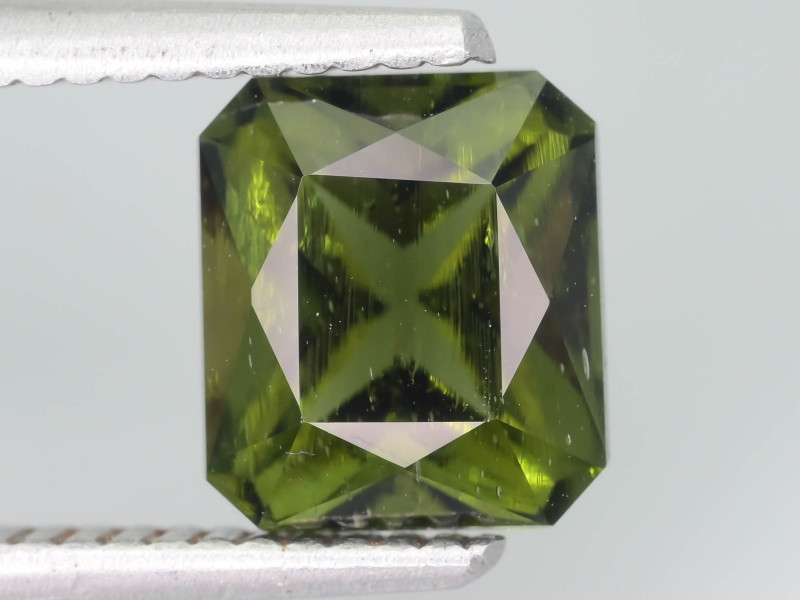 Pictured above: Moldavite gemstone
Pictured above: Moldavite gemstone
Tektites are a type of impact glass formed when a meteorite impact causes material to rapidly melt, fly into the air, then rapidly cool into glass as it falls back to Earth.
Types of tektite glass are generally named for the “strewn fields” where they’re found, such as:
Moldavite: From Moldau River in Czechia
Libyan Desert Glass: From Libyan Desert
Australite: From Australia
Ivorites: From Ivory Coast
Darwin Glass: From Mount Darwin in Tasmania
Tektites can be black, brown, gray, white, or green. They often have irregular, intricate shapes or resemble glassy pebbles. Most have numerous bubbles inside.
Fulgurites
 Pictured above: Type I sand fulgurite | Image credit: Rama, CC-BY-SA-2.0
Pictured above: Type I sand fulgurite | Image credit: Rama, CC-BY-SA-2.0
Fulgurite, or “fossilized lightning,” is fused silica coated in sand, formed from lightning strikes.
Depending on what the lightning hit, there are 4 main fulgurite classes:
Type I: From wet sand; Thin glass walls, almost entirely sand; 95-100 percent glass
Type II: From clay soil; Thicker glass walls; Up to 90 percent glass
Type III: From calcic sediment; Mostly calcium-carbonate-based cement called caliche; Up to 10 percent glass
Type IV: From rocks; Thicker glass walls; Up to 90 percent glass
Each type varies in appearance and size. They’re usually black or tan, but impurities can lend other colors. Colored fulgurites can also form when lightning strikes man-made objects.
Volcanic Glass
Besides obsidian, other notable volcanic glass types are:
Tachylite: Black or dark brown, resinous luster, resembles tar; Sometimes contains small olivine or feldspar crystals; Sideromelane: Transparent, yellow-brown
Palagonite: Term for various products of volcanic glass alteration, either water and basalt melt or basaltic glass weathering; Often yellow-orange to brown; Gel-palagonite: Colorless, transparent, smooth; Fibro-palagonite - Translucent, fibrous or granular, birefringent
Macusanite: Usually yellow-green, transparent, and pebble-like with andalusite and sillimanite phenocrysts; Earliest specimens from Macusani basin, Peru
Pele’s Hair: Golden-yellow, resembles straw or hair; Forms when cooled lava stretches into thin fibers, often carried away by wind
Pele’s Tears: Jet black, tear-like drops, usually on end of Pele’s Hair (pictured below)
Limu o Pele (Pele’s Seaweed): Brownish-green to near-colorless, shattered flakes and thin sheets resembling seaweed
The last three are named after Pele, the Hawaiian goddess of volcanoes.
 Pictured above: Pele's Tears | Image credit: James St. John, Flickr, CC-BY-SA-2.0
Pictured above: Pele's Tears | Image credit: James St. John, Flickr, CC-BY-SA-2.0
Natural Glass History
Although humans started making glass around 4,000 years ago, uses of natural glass go way back. People made obsidian tools during the Stone Age. The first known mirrors from around 4,000 BC were polished obsidian!
But glass in nature was around long before humans. The oldest known batch of tektites dates back to when non-avian dinosaurs went extinct, likely formed via the meteorite impact behind that extinction.
The earliest tektite tools are dated between 4,000-6,000 BC. Tektites were also used for good luck around 500 BC. The first written reference of tektites dating to 950 AD came from Liu Sun, who called them Lei-gong-mo, Chinese for “inkstone of the thundergod.”
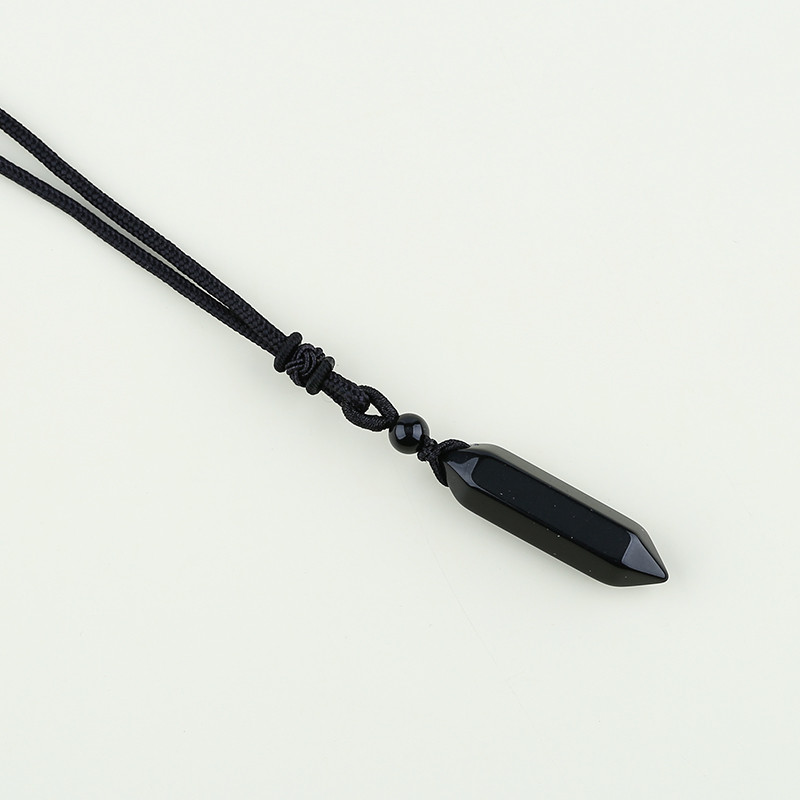 Pictured above: Obsidian pendant
Pictured above: Obsidian pendant
Natural Glass Healing Properties
Natural glass gems can be used as powerful healing stones. With the array of colors, glass gemstones can be chakra stones for opening any chakra.
Dark glass gems like obsidian or Pele’s tears are commonly used for clairvoyance and divination. Fulgurites’ lightning-strike origins are said to invigorate the spirit and boost circulation.
 Pictured above: Moldavite ring
Pictured above: Moldavite ring
Natural Glass Gemstone Properties
Natural glass gemstones aren’t graded like other gems, but we’ll highlight the grading properties that can influence their value.
Color: Obsidians, tektites, and Libyan desert glass with rarer colors are more valuable. Iridescence can also add value.
Cut: Generally, high-quality faceted cuts are most valuable, except with chatoyant obsidian that must be cut as cabochons.
Transparency: Higher transparency means higher value in all natural glass.
Size: Size is often number-one for tektite value, with larger sizes commanding higher prices. Size is somewhat important for fulgurite value.
Rarity: Rarer natural glasses like tektites are more valuable than common ones like obsidian.
Natural Glass Formation & Sources
Natural glass can form in a few ways:
Volcanic Activity: Magma or lava rapidly cools into glass (Volcanic glass, obsidian)
Meteorite Impact: Meteorite hits Earth, causing materials to rapidly melt, fly into the air, then rapidly cool into glass as they falls back to Earth (Tektites)
Weather Events: Lightning strikes sand or rock, melting it and fusing the silica into glass (Fulgurites)
Some stones like obsidian are considered natural glass lava rocks.
Some animals like the Hexactinellid sponge, or “glass sponge,” have amorphous, silica-based tissues (spicules). Some scientists call it a glass-based skeleton — which remains after the sponge dies (like coral) — but others say it’s only glass-like.
Scientists discovered another organic glass in 2015: a protective “bioglass” created by the tiny sea creatures tardigrades (a.k.a. water bears) when they’re dehydrated. The glass holds them together until their cells are rehydrated.
Mining Locations
Where is natural glass found? Natural glass is found all over the world, with certain types specific to geological locations.
Volcanic glass types like obsidian are found in volcanic regions, with significant deposits worldwide. Pele’s Hair and Pele’s Tears are also found in volcanic regions, notably in Nicaragua, Italy, Ethiopia, and Iceland.
For tektite locations, check out our Tektite Info Guide.

Pictured above: Snowflake obsidian earrings
Natural Glass Price & Value
Natural glass stone prices vary by individual stone, though they’re pricier than made-made glass gems.
Obsidian is the most affordable, typically costing $2-$5 per pound.
You can see the price ranges of various tektites in the info guide linked above. Ivorites and Uruguaites are usually priciest, while Zhamanshinites and Philippinites are usually most affordable.
Fulgurites range broadly, from around $5 to upwards of $5,000.
Natural Glass Care and Maintenance
Last up is gemstone care. Most natural glass is safe to touch, but always wear gloves when handling Pele’s Hair!
With mid-range hardness, we recommend protective settings on natural glass gemstone jewelry, particularly rings. Clean the stones with mild soap, warm water, and a soft toothbrush.
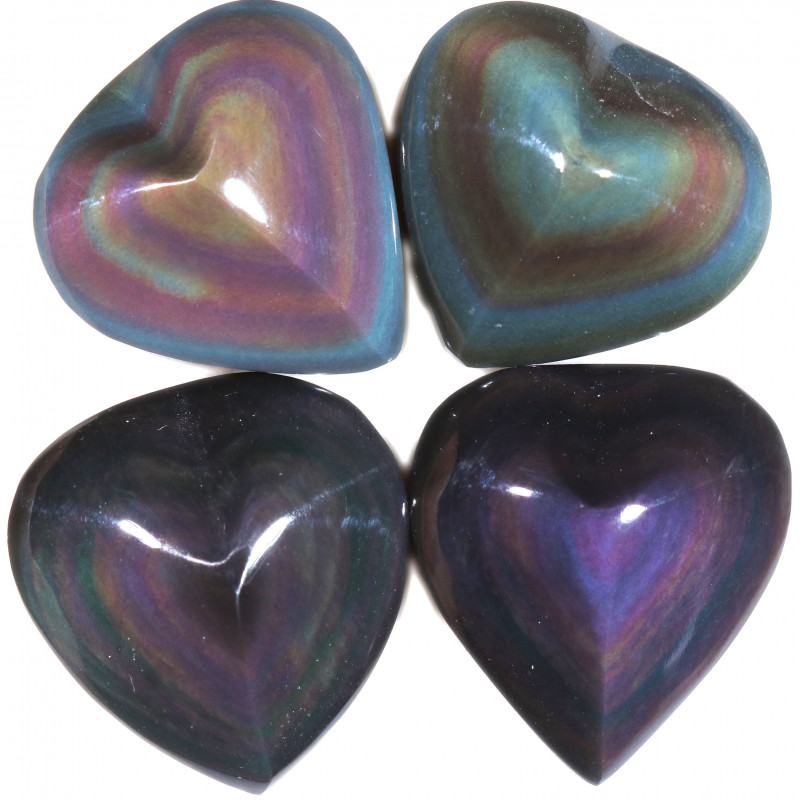 Pictured above: Rainbow obsidian
Pictured above: Rainbow obsidian
Open a Window of Opportunities with Natural Glass Gems!
If you love gemstones for their natural beauty, natural glass gemstones are a great way to expand your horizons into what Earth and the cosmos can offer. You’ve got plenty of unique shapes and colors to choose from, so what are you waiting for?
Buy natural glass gemstones like obsidian or tektites like Darwin glass, moldavite, and more today!
Was this article helpful?
2 people found this article helpfulRoss Sedawie
- Written - 21st May 2023
- Edited - 1st Aug 2023
















